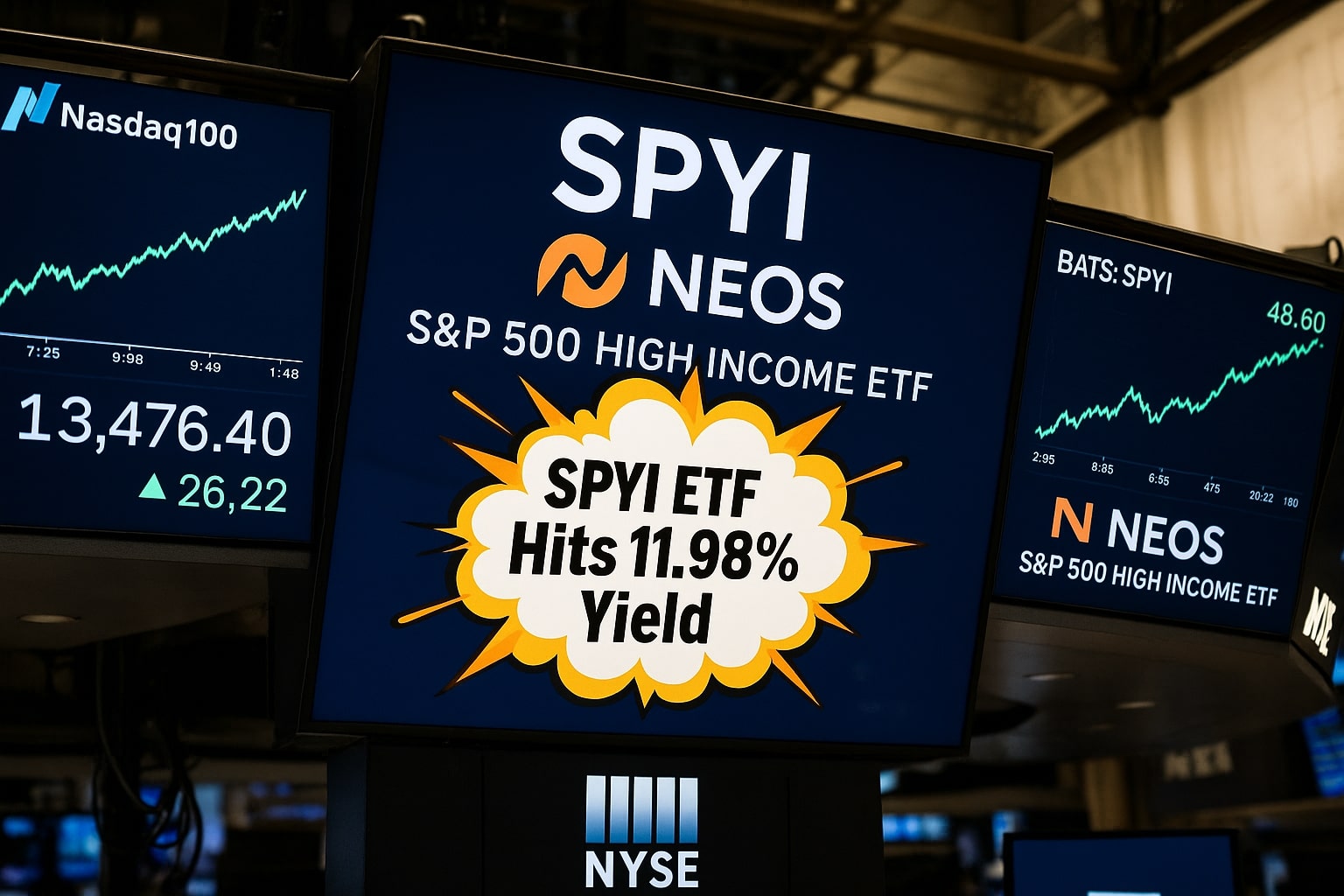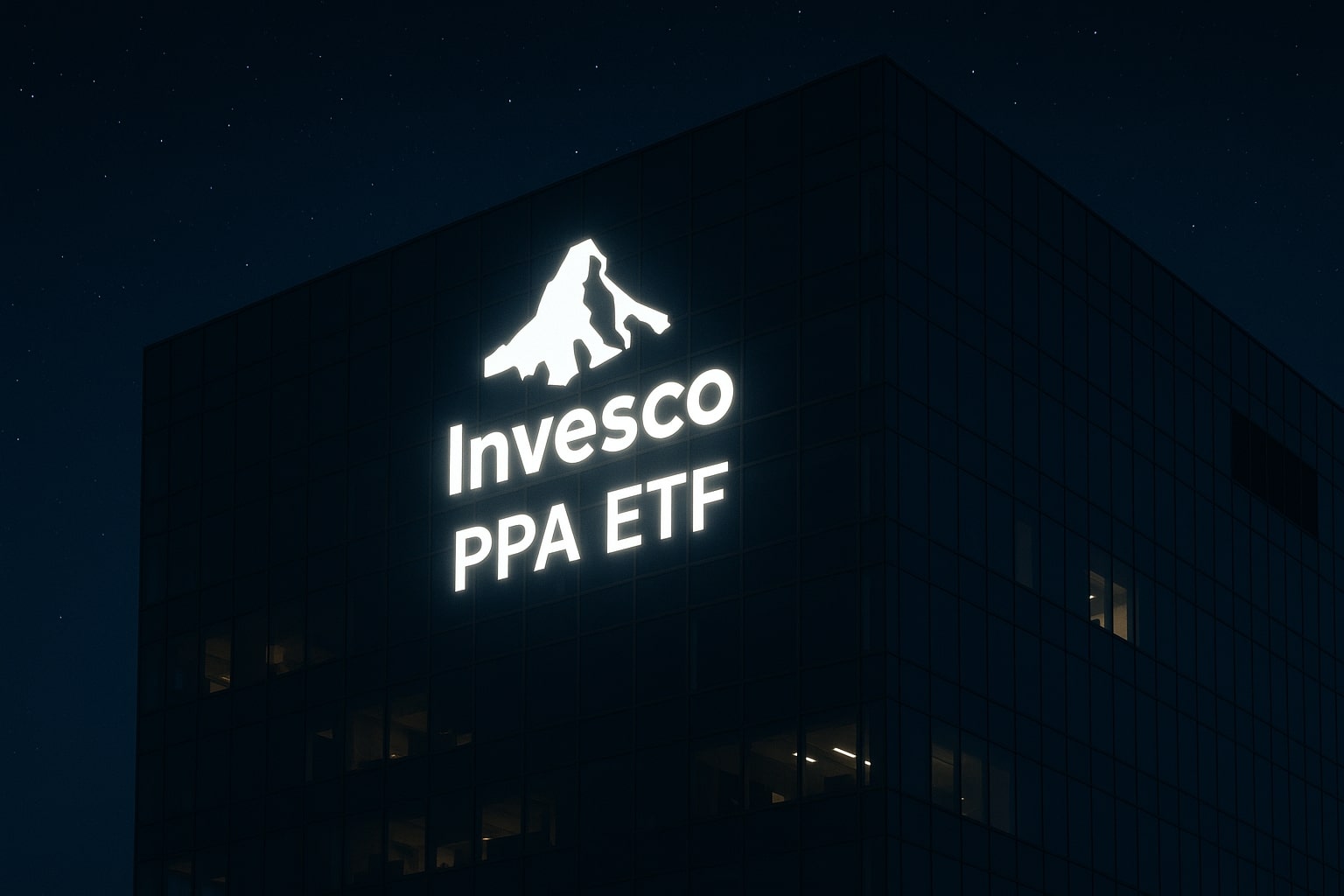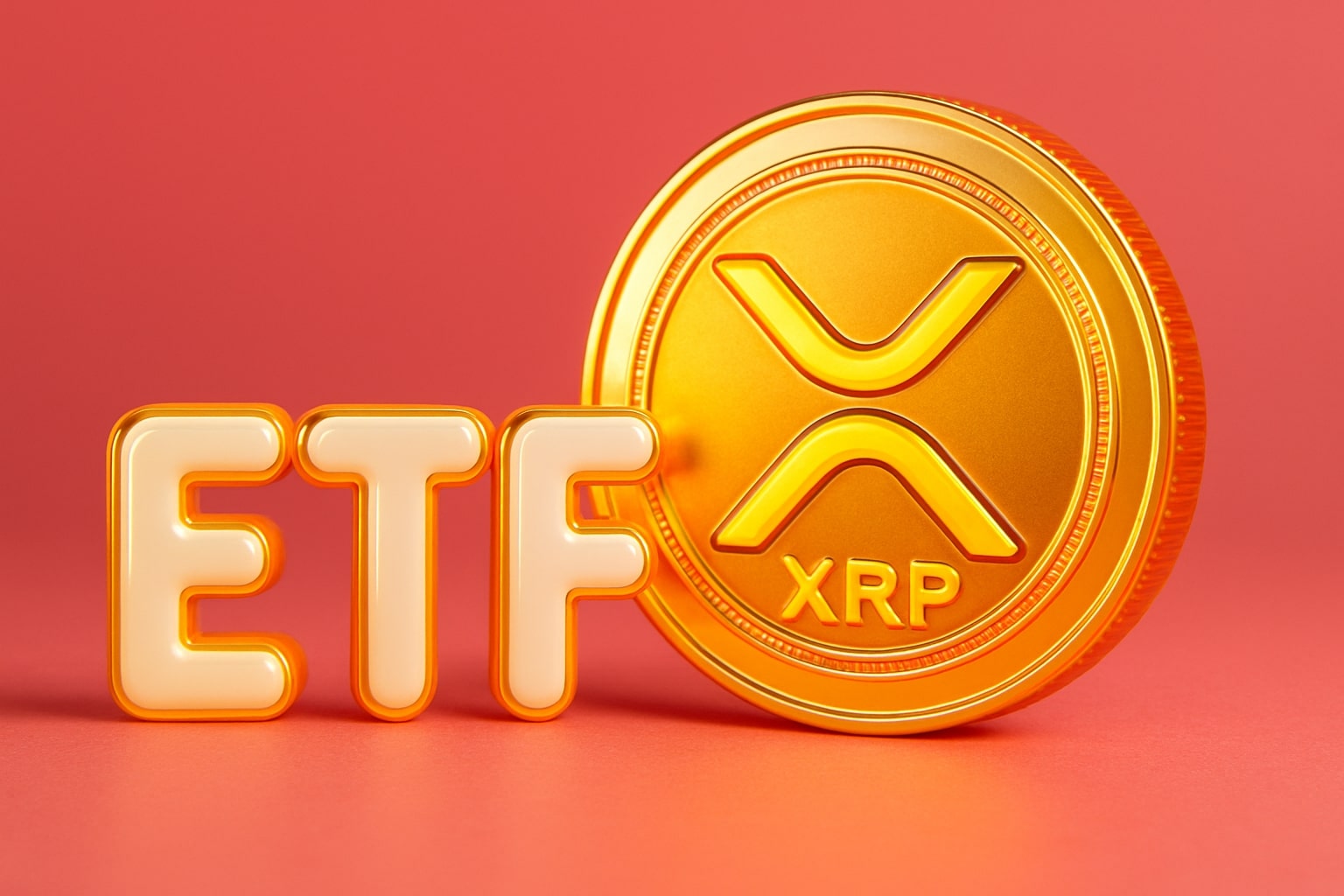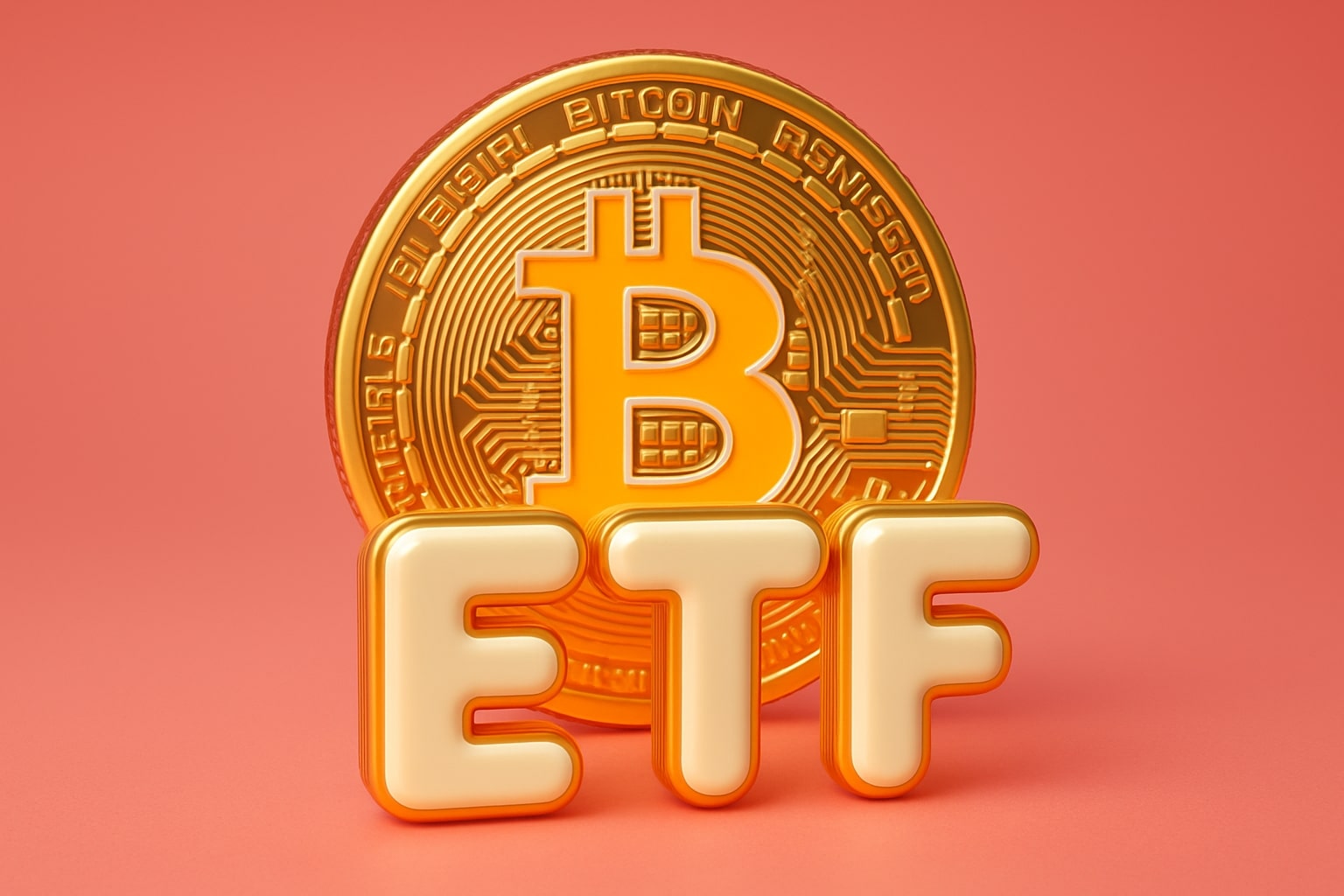
SPYI ETF Hits 11.98% Yield, Extends Lead Over Covered-Call Competitors
BATS:SPYI strengthens its position with record income levels, diversified holdings, and a volatility edge over QYLD | That's TradingNEWS
BATS:SPYI ETF Extends Lead Over Covered-Call Peers as Yield Outpaces Historical Average
The Neos S&P 500 High Income ETF has maintained its position as a high-yielding, option-based income product with a strategy anchored to the S&P 500 index. SPYI’s trailing twelve-month yield now stands at 11.98%, more than 21% above its 4-year average of 9.89%, underscoring an unusually favorable income profile compared to history. Assets under management have climbed to $4.6 billion, reflecting rapid adoption since its 2022 inception. The fund’s expense ratio is 0.68%, slightly above peers like JEPI (0.35%) and GPIX (0.29%), but the structure includes active SPX call spread overlays designed to target ~1% monthly distributions without excessive turnover. With 510 underlying holdings and only 38% of assets concentrated in the top ten names, SPYI offers broader diversification than many covered-call competitors.
Income Mechanics: Call Spread Strategy and Market Sensitivity
SPYI replicates the S&P 500 constituents and layers in actively managed call spreads on SPX futures. The objective is to extract premiums from option sales, contributing 5–6% annualized from derivatives alone, while the equity sleeve captures residual upside from the index. This works best in mildly rising or sideways markets, but when equities experience flat stretches punctuated by sharp swings—as occurred during the tariff rally and subsequent sell-off—the income layer may underperform theoretical expectations. Sustaining the near-12% yield in prolonged stagnant markets depends heavily on the option layer’s ability to generate consistent premium income.
Drawdown Management and the Gold Pairing Experiment
Historical performance data show SPYI cushioning equity drawdowns by approximately 2–3% in turbulent periods compared to the S&P 500. While this reduction is meaningful for income-focused investors, the protection is modest relative to the upside sacrificed through covered-call caps. To address this, a 50:50 allocation between SPYI and the Credit Suisse Gold Shares Covered Call ETN (GLDI) was modeled. The backtest, beginning August 2022, showed materially smoother capital paths during the March–April 2025 tariff-related equity drop, as gold’s partial decorrelation blunted losses. Yield consistency declined in the blend—monthly payouts fluctuated from 0.5% to 2% due to gold’s uneven income stream—but the total payout over the test period (≈39%) slightly exceeded SPYI’s standalone 38.8%, indicating no long-term sacrifice in aggregate distributions.
Relative Advantage Over QYLD: Valuation, Volatility, and Diversification Gaps
When set against the Global X NASDAQ 100 Covered Call ETF (QYLD), SPYI benefits from both index composition and current implied volatility (IV) dynamics. SPYI’s underlying SPY index options trade with an IV of 12.5, in the 20th percentile of the past year, compared to QQQ’s 15.6 IV in the 8th percentile. This suggests that NASDAQ options are unusually cheap relative to historical risk levels, potentially limiting QYLD’s premium capture just as valuation risk in the NASDAQ-100 expands. Over the last three months, the S&P 500 gained ~13%, while the NASDAQ-100 rose ~18%, leaving covered-call ETFs lagging their benchmarks due to the income-for-upside trade-off. SPYI’s broader sector exposure—510 holdings vs. QYLD’s 103—and lower top-ten concentration (38% vs. 52%) further reduce single-sector drawdown risk.
Cost and Liquidity Considerations
SPYI’s 0.68% expense ratio is higher than QYLD’s 0.60%, and QYLD maintains superior liquidity with $8.3 billion in assets—nearly double SPYI’s size—resulting in tighter bid-ask spreads. However, SPYI’s turnover rate is 14%, well below QYLD’s 21.5%, potentially reducing trading frictions and tax drag over time. The yield differential, when adjusted for history, still tilts in SPYI’s favor, providing a greater margin of safety for income-focused investors willing to accept slightly higher costs.
Market Outlook and Positioning
In the current macro environment—where the S&P 500 trades at elevated valuations but without the extreme momentum concentration of the NASDAQ—SPYI appears positioned for steadier income capture with lower downside beta than tech-heavy covered-call peers. Pairing with GLDI can further dampen equity-specific drawdowns without eroding long-term payout potential. For tactical allocators, maintaining a higher SPYI weighting maximizes yield stability, while increasing gold’s share enhances volatility smoothing. Given the present yield premium, structural diversification, and more favorable volatility backdrop relative to QYLD, the BATS:SPYI ETF continues to merit a Buy stance, particularly for investors prioritizing consistent monthly income over maximum equity upside capture.
That's TradingNEWS
Read More
-
PPA ETF at $154: Can This Defense ETF Keep Beating ITA and SPY?
14.12.2025 · TradingNEWS ArchiveStocks
-
XRP ETFs XRPI and XRPR Pull In $975M While XRP-USD Fights To Hold $2
14.12.2025 · TradingNEWS ArchiveCrypto
-
Natural Gas Price Forecast: NG=F Hits $4.11 As Warm Winter Outlook Puts $3.913 Support At Risk
14.12.2025 · TradingNEWS ArchiveCommodities
-
USD/JPY Price Forecast - Dollar to Yen Can BoJ’s 0.75% Shock Break The 155–158 Range?
14.12.2025 · TradingNEWS ArchiveForex


















